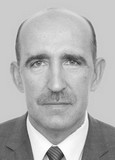INTERRELATION OF INDICATORS OF BODY COMPOSITION WITH THE EFFECTIVENESS OF COMPETITIVE ACTIVITY OF HIGHLY QUALIFIED BIATHLETES
Keywords:
body composition assessment, bioelectrical impedance analysis (BIA), Maltron Bioscan 920-II, caliperometry, highly qualified biathletes.Abstract
Objective of the study was to determine the relationship between the body composition of highly qualified biathletes and the indicators of competitive activity at the stages of long-term training.
Methods and structure of the study. The scientific work was carried out with the participation of biathletes of the qualification Master of Sports, Master of Sports of International Class and Honored Master of Sports in the sports seasons of 2015-2022. Bioelectrical impedance analysis (BIA) was carried out on a Maltron Bioscan 920-II using the equations for the European population with the choice of the level of sports fitness - "Athlete".
Results and conclusions. Monitoring of changes in body composition using BIA Maltron BioScan 920-II and caliperometry allows you to assess current and cumulative changes in the process of long-term training of biathletes with high accuracy and reliability. Using the BIA Maltron BioScan 920-II allows you to obtain indicators that are not available using the caliperometry method. As a result of the analysis, indicators of body composition were identified that can be successfully used in monitoring body composition under the influence of training and competitive loads. The highest relationship among the analyzed indicators of body composition with the speed of movement along the distance has the sum of fat folds and the percentage of adipose tissue (R=0.44-0.51 at P>0.05). An increase in the loss to the leader in terms of movement speed was recorded with a decrease in the content of intracellular water in the body (ICW), protein, potassium, glycogen, percentage of adipose tissue, an increase in the content of extracellular water in the body (ECW) and total body water (TBW).
References
Abramova T.F., Nikitina T.M., Kochetkova N.I. Morfologicheskiye kriterii – pokazateli prigodnosti, obshchei fizicheskoi podgotovlennosti i kontrolya tekushchei i dolgovremennoi adaptatsii k trenirovochnym nagruzkam [Morphological criteria - indicators of fitness, general physical fitness and control of current and long-term adaptation to training loads]. Guidelines. Moscow: Skyprint publ., 2013. 132 p.
Melchiorri G., Viero V., Sorge R., Trioss T. i, Campagna A., Volpe S., Lecis D., Tancredi V., Andreoli A. Body composition analysis to study long-term training effects in elite male water polo athletes. Sports Med Phys Fitness. 2018;58(9):1269-4.
Ward L.C. Bioelectrical impedance analysis for body composition assessment: Reflections on accuracy, clinical utility, and standardization. Eur. J.Clin. Nutr. 2019, 73, 194-199.
Development and validation of BIA prediction equations of upper and lower limb lean soft tissue in athletes Sardinha. L.B.; Correia, I.R.; Magalhaes, J.P.; Judice, P. B.; Silva, A. M.; Hetherington-Rauth, M. Eur. J.Clin. Nutr. 2020, 74, 1646-1652.

Downloads
Published
Versions
- 28-04-2023 (2)
- 18-04-2023 (1)

